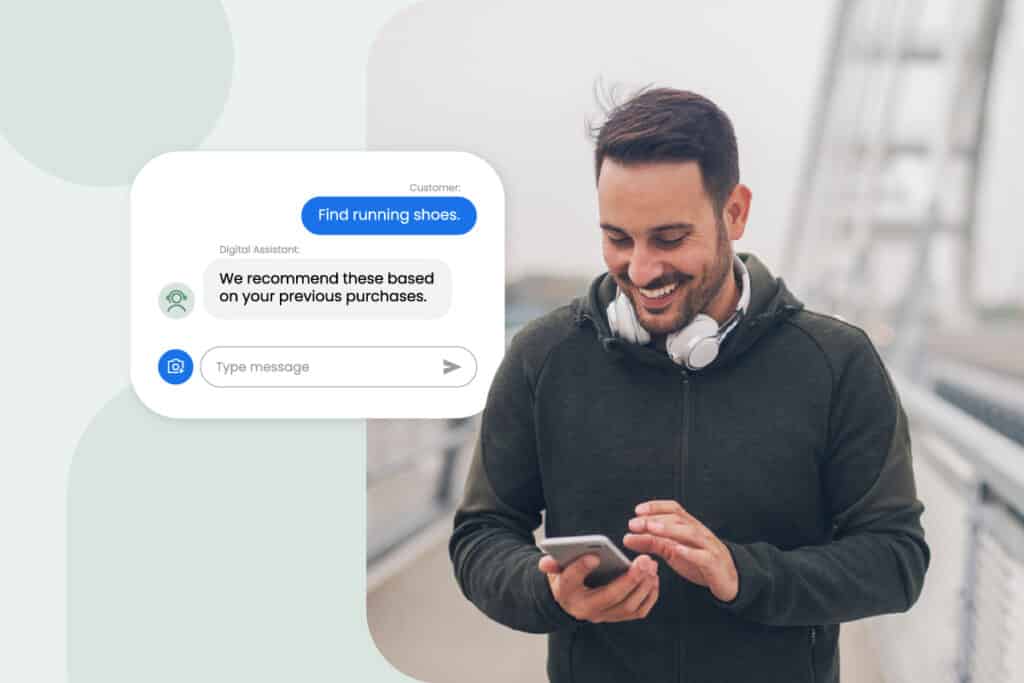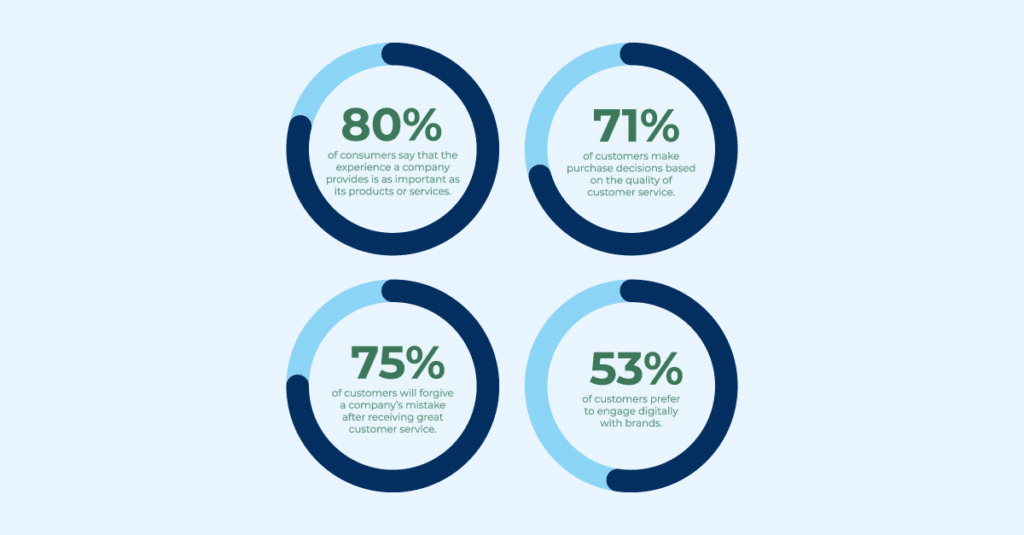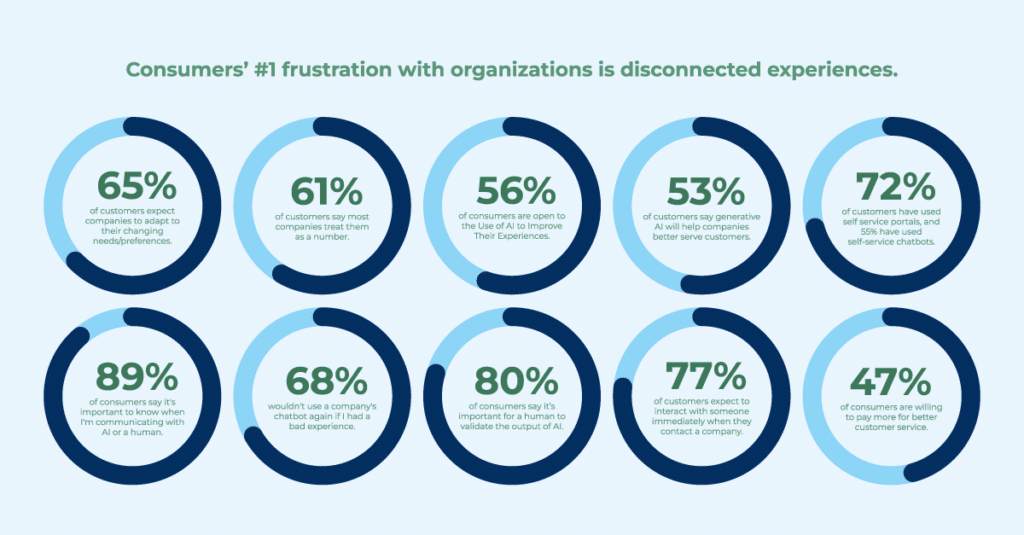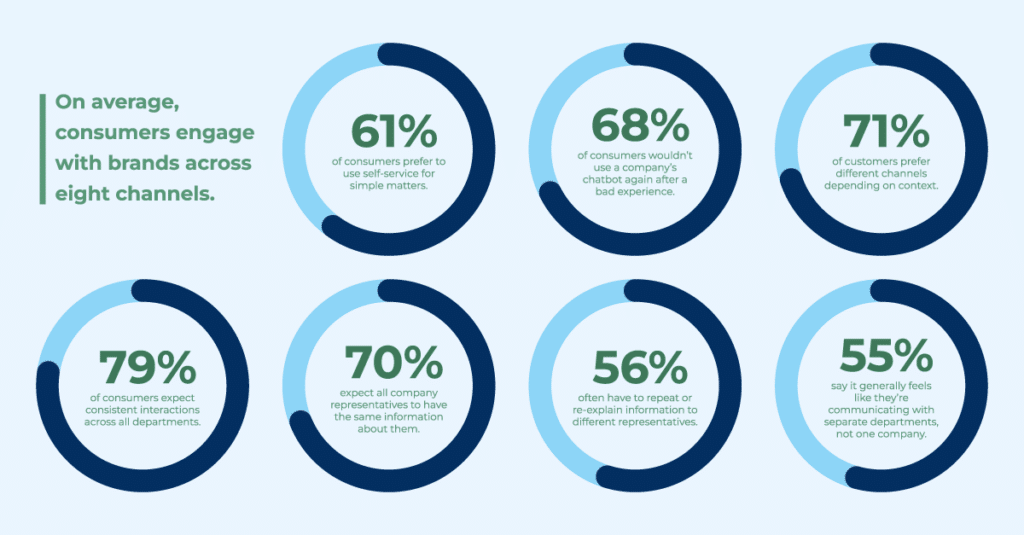New Salesforce Research Reveals the Key to Revenue Growth in 2024

Historically, there were a few major brands that dominated any given product or service category. If you were in the market for a washing machine, you’d choose between Maytag and Whirlpool. If you needed an oil change, you had your pick of Jiffy Lube or Midas.
Those days are long gone.
Today, consumers have a ton of choice across any product or service category. They have their pick of legacy brands, digital natives, and those emerging brands that seem to pop up overnight. Brands must work hard to set themselves apart.
Developing great products is an important way to stand out. But it’s no longer enough.
Modern consumers demand great experiences, too. Your ability to deliver experiences that meet consumers’ expectations is key to attracting customers – and convincing them to stick with you long-term.
Read on to explore how delivering outstanding service experiences has become essential to revenue growth, based on some of the key findings from Salesforce’s recently released State of the Connected Customer report.
Great Service Experiences Have Become an Expectation

Don’t get us wrong: developing great products is still hugely important. But it’s no longer enough to guarantee success.
These days, experiences also have a huge impact on purchase decisions. In fact, 8 in 10 consumers say the experience a company provides is as important as its products or services.
But one-size-fits all experiences won’t cut it. 65% of consumers expect brands to adapt to their changing needs and preferences. And nearly three-quarters expect better personalization as technology advances.
The harsh reality is that most brands are falling short of customers’ expectations. 61% say most companies treat them as a number. And eight in 10 feel customer experiences should be better, considering the amount of data companies collect.
Delivering Great Support Experiences Sets You Apart – and Helps You Grow Revenue
Clearly, there’s a big disconnect between customer expectations and the reality of what brands are delivering. But the good news is, if your brand does consistently deliver great service experiences, it’ll be a powerful way to set yourself apart.
Before a sale, great service experiences build trust – and purchase likelihood. According to Salesforce, seven in 10 (71%) of customers make purchase decisions based on the quality of customer service.
Great service experiences can also turn a negative situation around – and restore a shopper’s trust. Three-quarters of customers will forgive a brand’s mistake after experiencing excellent customer service. When trust is restored, that customer is more likely to give the brand another try.
Finally, if you consistently deliver outstanding service experiences, you can expect a bump in referrals. Three-quarters of customers say they’ll recommend a company based on its great customer service.
When it Comes to Service, You Have to Be Where Your Customers Are

In the past, service experiences were primarily delivered via phone call or in-person visit. But these channels are losing favor among consumers.
Salesforce research found that 53% of consumers prefer to engage digitally. Millennials (65%) and Gen Z’ers (61%) are especially likely to feel this way.
“Digital” doesn’t necessarily equate to email. Rather, consumers are leveraging myriad digital channels – including live chat, SMS, messaging apps, and social media (among others) – to seek service.
And, more often than not, consumers are using multiple channels. On average, consumers engage with brands across eight channels. And seven in ten (71%) prefer different channels depending on context.
Brands must be equipped to deliver outstanding experiences via their customers’ preferred channels. In addition, brands must ensure customers’ experiences are seamless and connected, regardless of which – and how many – channels a given customer is using.
Why? Because 79% of consumers expect consistent interactions across departments. And seven in 10 expect each company representative they interact with to have the same information about them.
Self Service Portals and Automation Empower Brands to Scale Service Experiences – But Not Every Brand Gets it Right

Consumers expect winning service experiences. And they reward brands that consistently deliver.
Meeting these lofty expectations can seem like a time consuming, costly endeavor. This is especially true when you consider the sheer volume of channels consumers are using to seek service.
It’s important to remember that not every service experience must be delivered by a live support person. Instead, many brands are tapping into automation, artificial intelligence (AI), and self service portals to deliver winning service experiences – wherever and whenever a customer’s need arises.
Most consumers are quite open to this approach. Nearly three-quarters (72%) of consumers have used self service portals; 55% have used chatbots. Furthermore, 61% actually prefer to use self service for simple matters.
61% of consumers prefer to use self service for simple matters.
Source: Salesforce State of the Connected Customer Sixth Edition
Strategically leveraging self service and automation can help lighten the load on your support teams – while still ensuring customers have outstanding service experiences 24/7.
But it’s important to get it right – or risk losing a customer. 68% of consumers wouldn’t use a company’s chatbot again after having a bad experience.
Start Delivering Winning Support Experiences That Drive Revenue
Offering great products and services is important. But in today’s crowded marketplace, it’s no longer enough.
You must also make it a priority to deliver outstanding service experiences throughout the purchase journey. And you must be equipped to deliver these experiences via your customers’ preferred channels.
When you consistently deliver great support experiences, this will become a key differentiator. Great service will help you earn your customers’ trust, business, and loyalty.
Remember: not every service experience requires a human. The most successful brands are those that leverage a blend of automation and human interaction to deliver winning service experiences every time.